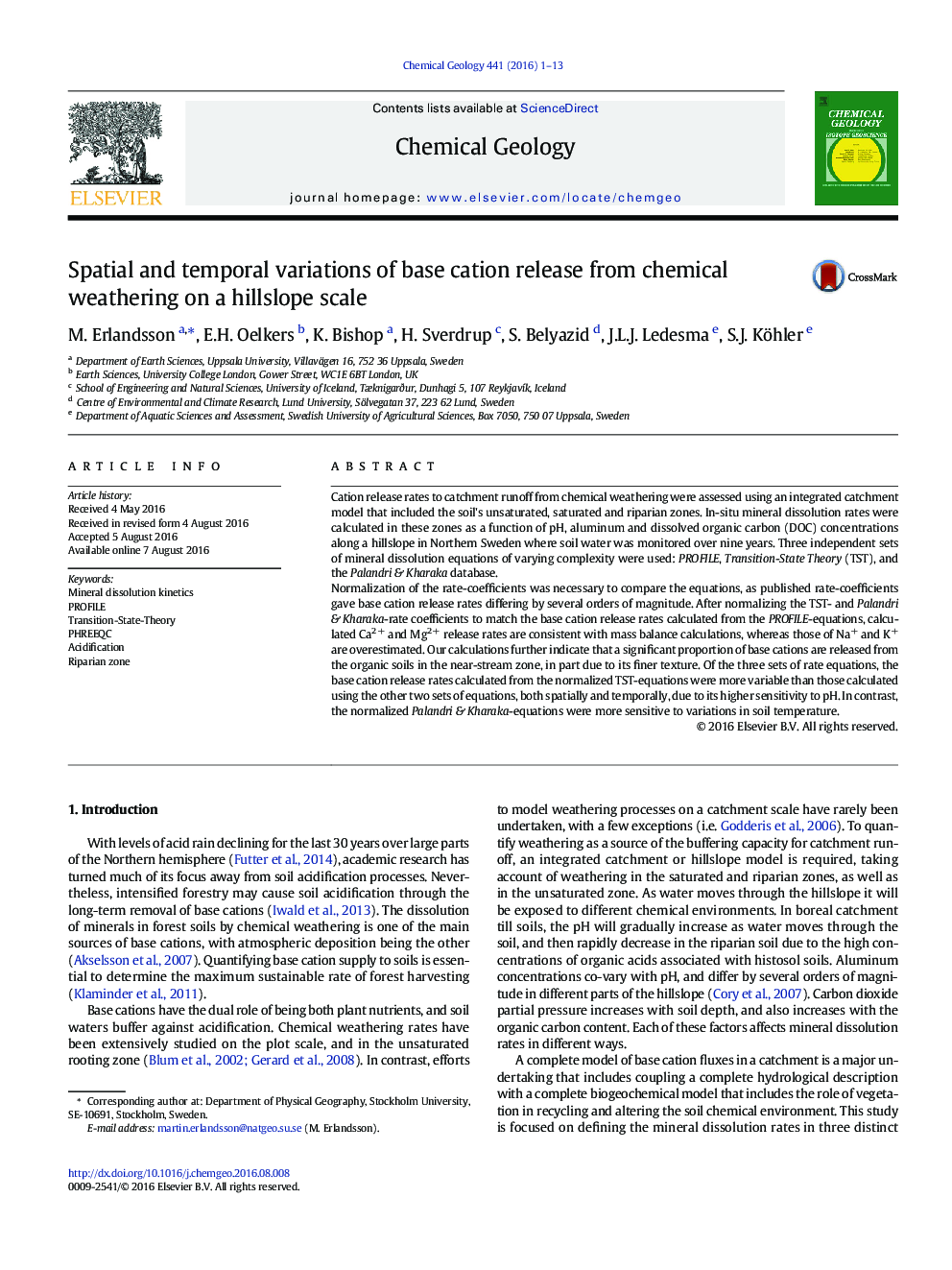| Article ID | Journal | Published Year | Pages | File Type |
|---|---|---|---|---|
| 4698203 | Chemical Geology | 2016 | 13 Pages |
•Base cation release rates from mineral dissolution were calculated for a boreal forested hillslope.•Different models for mineral dissolution rates distributed base cation release differently over the hillslope.•The organic-rich near-stream zone contributed significantly to the total base cation release.•The unsaturated and the saturated zones contributed approximately equally to base cation release.•Mass balance calculations overestimated the release rates of Na+ and K+.
Cation release rates to catchment runoff from chemical weathering were assessed using an integrated catchment model that included the soil's unsaturated, saturated and riparian zones. In-situ mineral dissolution rates were calculated in these zones as a function of pH, aluminum and dissolved organic carbon (DOC) concentrations along a hillslope in Northern Sweden where soil water was monitored over nine years. Three independent sets of mineral dissolution equations of varying complexity were used: PROFILE, Transition-State Theory (TST), and the Palandri & Kharaka database.Normalization of the rate-coefficients was necessary to compare the equations, as published rate-coefficients gave base cation release rates differing by several orders of magnitude. After normalizing the TST- and Palandri & Kharaka-rate coefficients to match the base cation release rates calculated from the PROFILE-equations, calculated Ca2 + and Mg2 + release rates are consistent with mass balance calculations, whereas those of Na+ and K+ are overestimated. Our calculations further indicate that a significant proportion of base cations are released from the organic soils in the near-stream zone, in part due to its finer texture. Of the three sets of rate equations, the base cation release rates calculated from the normalized TST-equations were more variable than those calculated using the other two sets of equations, both spatially and temporally, due to its higher sensitivity to pH. In contrast, the normalized Palandri & Kharaka-equations were more sensitive to variations in soil temperature.
